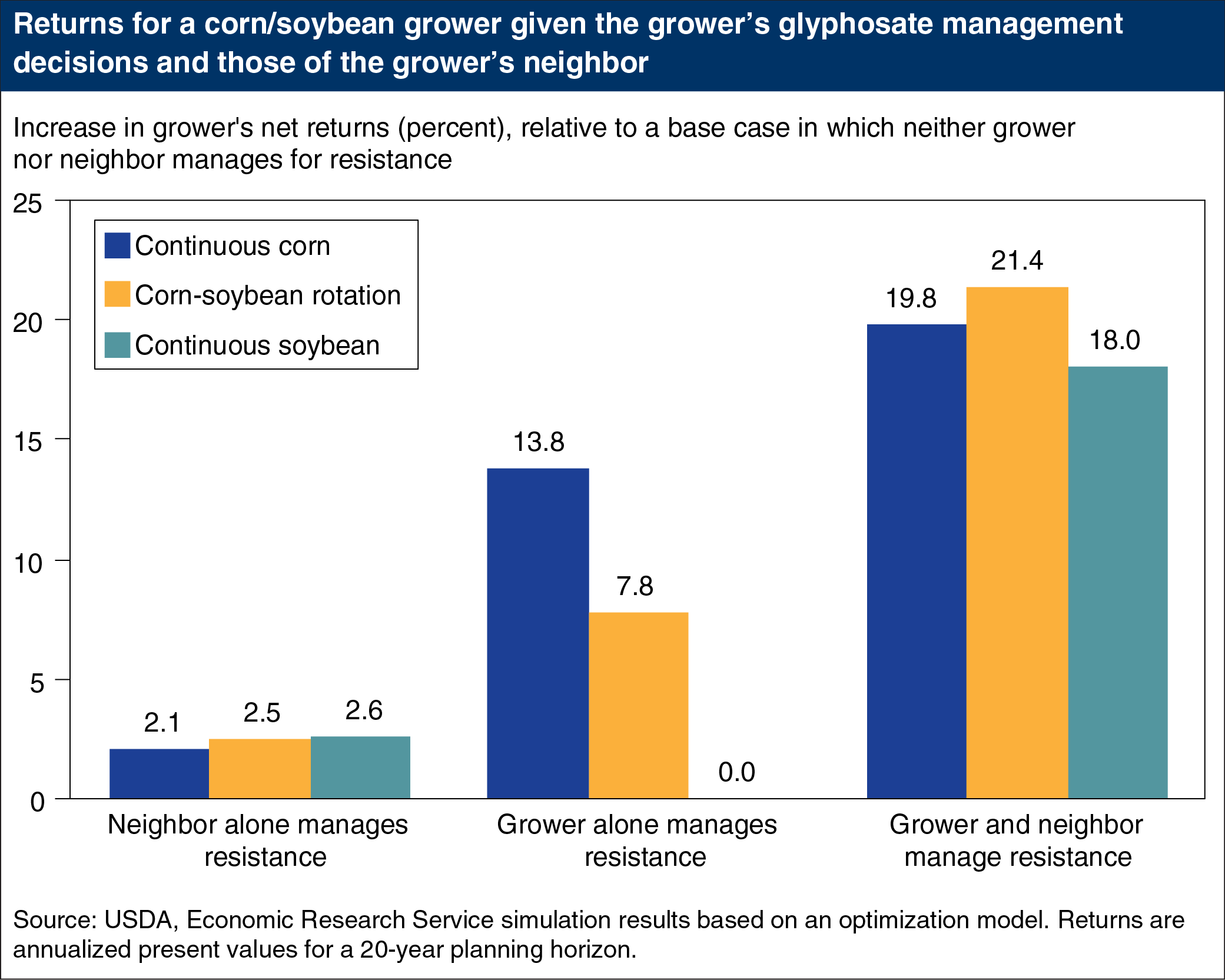Corn and soybean returns are highest when growers and their neighbors manage glyphosate resistance
- by Jorge Fernandez-Cornejo
- 7/30/2015

Glyphosate, also known by the trade name Roundup, is the most widely used herbicide in the United States. Widespread and exclusive use of glyphosate, without other weed control strategies, can induce resistance to the herbicide by controlling susceptible weeds while allowing more resistant weeds to survive, propagate, and spread. Resistant weed seeds can disperse across fields—carried by animals, equipment, people, wind, and water. Consequently, controlling weed resistance depends on the joint actions of farmers and their neighbors. ERS analyses evaluated the long-term financial returns to growers who adopt weed control practices that aim to slow resistance to glyphosate, and compared those returns when neighboring farmers also manage to slow resistance. Projected net returns (annualized over 20 years) for growers who manage resistance generally exceed returns for growers who ignore resistance; they are even higher when neighbors also manage resistance. Projected net returns for growers with neighbors who also manage resistance range 18-20 percent higher than those of growers/neighbors who ignore resistance. This chart visualizes data found in the Amber Waves feature, “Managing Glyphosate Resistance May Sustain Its Efficacy and Increase Long-Term Returns to Corn and Soybean Production,” May 2015.


